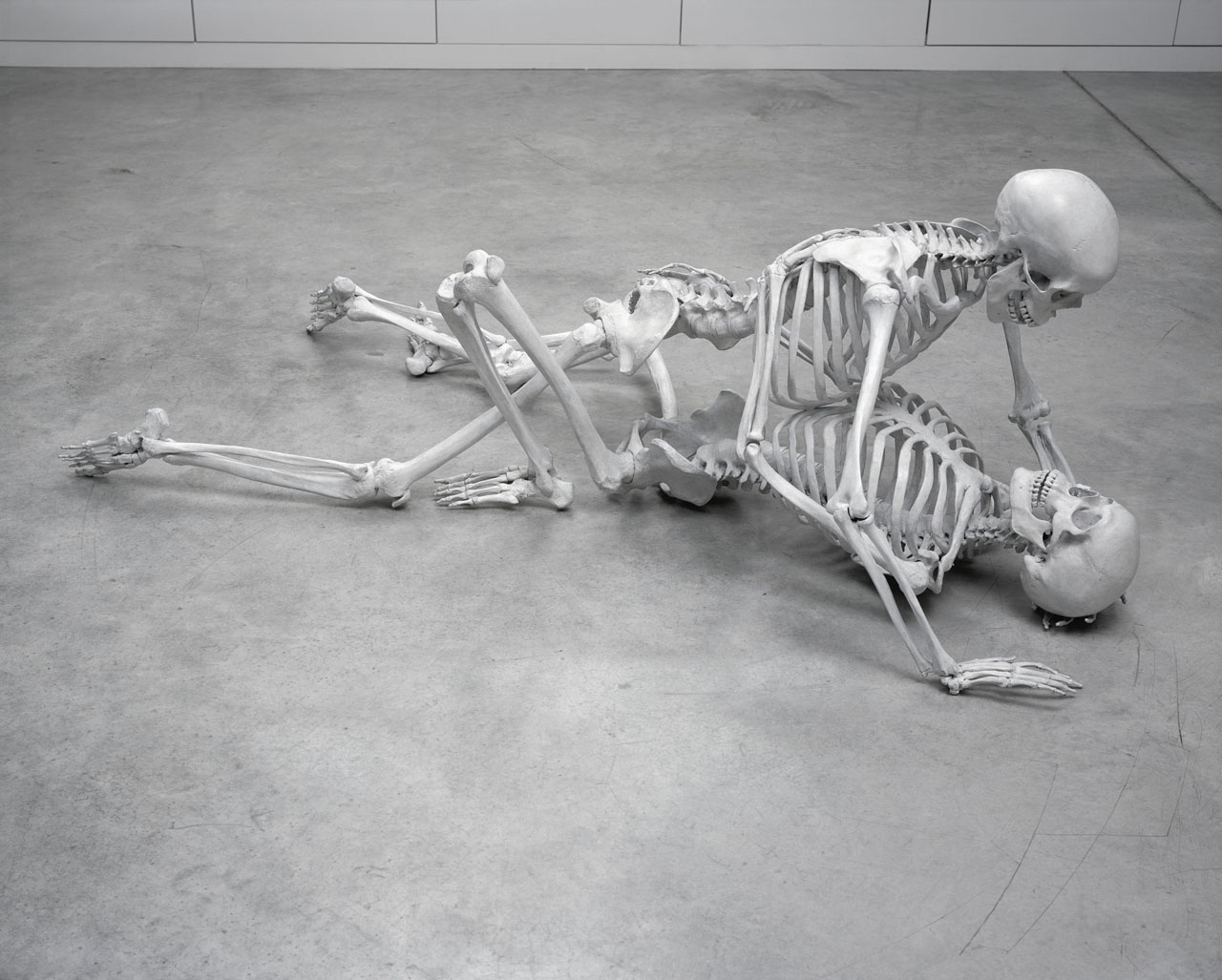
Foundation
Marc Quinn
October 5 → January 6, 2008
Gathering over forty recent works, DHC/ART’s inaugural exhibition by conceptual artist Marc Quinn is the largest ever mounted in North America and the artist’s first solo show in Canada
Years and years before making revolutionary videos for Björk, before creating a symbiotic visual aesthetic to help tell the story of Björk’s endlessly giving album Vulnicura, before the mind-bending and immersive installations in Tokyo, Sydney and New York’s MoMA, Andrew Thomas Huang went viral.
In 2005, while studying fine arts at the University of Southern California, Huang started working on his first short film, called Doll Face. A motion-captured face, abjectly blank and oddly connected to some robotic wiring, stares at a television set and sees a reflection of a lush, traditionally beautiful woman covered in makeup. Using its spindly mechanical arms, a series of brushes start to apply makeup to this emotionless hybrid-cyborg face as it remains droll and lifeless. It’s a piece about prescribed femininity, the insidious effect of mass media, the disassociation of the body with systemic norms of beauty and, to say the least, it’s pretty creepy.
Huang uploaded his film to YouTube in 2007. Suddenly, Doll Face became one of the site’s first viral hits, garnering hundreds of thousands of views in just a few days. Huang the filmmaker was thrust into the digital spotlight. He was invited to a YouTube summit at Google headquarters with several other “content creators.” Agents and production companies expressed interest in him, and he took meetings with industry bigwigs. He did a commercial for Lexus and some music videos for young indie bands. J.J. Abrams even reached out to show his love. Things were moving quickly.
But all this viral success felt somewhat inorganic, like he was placed onto the wrong track. Something wasn’t quite aligned the way Huang wanted it to be.
“I just felt that commercially I wasn’t able to sustain a living at that time and I just needed to start over,” says Huang. So he scrapped his whole film reel in 2011 and started work on Solipsist, a “three-part psychedelic fantasy short film about otherworldly beings whose minds and bodies converge into one entity.” The sensational and arresting Solipsist was more in line with what Huang had been wanting to make, a short experimental film that incorporates elements of Chris Cunningham’s transformative ideas of the body with the vibrant visuals of Daniel Askill (most known for creating Sia’s music videos).
After the premiere of Solipsist in 2011, Huang was selected for the Saatchi & Saatchi New Directors Showcase – an honor once given to former Björk collaborators Spike Jonze and Michel Gondry, both of whom Huang had admired. Eventually, Huang heard from Björk herself, who asked him to help with the visuals for her 2011 album Biophilia. Now things were aligned, and Huang was on a path more to his liking.
“I’ve had these two directing careers,” says Huang, now 31, calling from his home in Los Angeles. “This is my second wave of learning what it means to be a filmmaker at the moment. I’ve been working with Björk ever since.”
One of Huang’s recent collaborations with Björk was in Montreal at the PHI Foundation from October 15 to November 12, 2016. Family, directed by Huang with co-creative direction by Björk and visual artist James Merry, is the centerpiece to Vulnicura, and the premiere was a monument of virtual reality. Like much of Björk’s art, it uses technology to enhance the emotions, and illuminates the full metamorphosis that happens after life-changing heartbreak. And while Huang has directed other VR and 360-degree videos, including Björk’s Stonemilker and Black Lake, Family sits at the vanguard of the form, his most immersive and experiential piece yet.
Huang spoke to RBMA Daily about his history with Björk, the long road to finally making Family, his unique storytelling devices and the line between experimental and commercial filmmaking.
It was shot in a very traditional, Ingmar Bergman-stark way. That was a conscious attempt on both her and my part. Seeing this traditionally but in a large-scale, tapestry-like format was the way to go. It’s like a death song – it’s a song about the death of her relationship and who she was. It made sense to shoot it in this traditional medium, and then everything after that we did using this new technology.
In a way, I did feel that life imitated art, where Black Lake was incredibly difficult to film. It was cold, she was barefoot. We shot it in the summer, which meant that the amount of night time that we actually had was very limited. We had to shoot this all at 4 AM.
We did [Stonemilker] maybe six months later, and Björk was already a different person by then. She was feeling much better. I think all the heaviness and the weightiness and the anxiety of doing the MoMA exhibition... I think we had all had it. We were all just ready to do something spontaneous and lighter. My producer had just become an executive producer at a VR company [then] called Vrse.works [now called Within]. She brought with her a VR camera that was a custom made thing with GoPro.
We decided at 10 PM on Friday night to shoot this thing at 6 AM Saturday, the next morning. We scrambled together and pulled this light crew out to this island on the westernmost tip of Reykjavík, and shot our first VR film in a really punk way. Even the dress that she’s wearing, which is a Michael van der Ham dress, the cape that she’s wearing, someone told me that we just dyed it the day before. It was just very spontaneous, and we did it.
The post-production was really involved, because there wasn’t really a workflow for that kind of VR at that time. But I was able to create a piece where, as she sings, she multiplies along with the rise and fall of the song. Even in post, there was some improvising. It was a much more spontaneous experience that I think mirrors the mood and the levity of her performance.
While we were doing all this, she wanted to create, in her words, a moving album cover. I thought she meant like a GIF. But it turned out, while we did the Stonemilker shoot, we happened to have her for a few days on the stage where I was going to shoot the album cover. We ended up instead just shooting more motion of her, stitching herself back together.
James Merry at the time was also expanding with his embroidery. It was honestly a playful session of, “Let’s just see what comes out of this.” We ended up making this short film that kind of told the whole Vulnicurastory, of her moving from this tombstone fossil where she’s pushing herself out of this grave, and she’s being splayed open. As she’s being splayed open, this new woman comes out that’s stitching herself back together.
As we were making this together, it was like, “This is the full story of this album, what song should we put to it?” Family was the cornerstone song on the album that really also embodied the different movements of this whole album, from the heartbreak to the healing to the empowerment at the end. So we chose that song. It was a bit confusing, I think, for a lot of people, because people were like, “Wait, so is this a full video or not?” But really, it was meant to be a short film.
After that, it was like, “Let’s actually make a full VR experience for this, for the full song.” This was September of 2015. The MoMA exhibition had passed. Björk was touring. I think we were all recovering, to be honest. It was such a whirlwind experience: making the album, finishing it, releasing it, with all the museum drama. I think we all just needed a break. Also, I knew that if we were to do Family as a full VR experience, I would want it to be really good and to be really polished.
All the VR technology had changed. The HTC Vive really proved to us that this is what we’d been waiting for. You want to be able to move around volitionally through a space, not just be stuck in one place. In other headsets you can look around, but you’re kind of stuck as a passive viewer. Now you can walk around in a space that is one-to-one with the virtual space that you’re looking at.
The story of the piece is about a woman who journeyed to see the Icelandic landscape to sew herself back together, out of heartbreak towards transcendence and empowerment. All the landscapes that you see in the piece are actual landscape scans of the sets that we shot in Black Lake. They’re meaningful scans – they’re not just any Icelandic environments. They’re part of the story that we’ve already set out to tell. You’ll be traveling inside an embroidered piece designed by James Merry that’s kind of like your magic carpet taking you through the world. We got actual motion-capture of Björk, so her presence is there in the piece.
The first piece I made with her, she had already established the world for Biophilia. She gave me pretty much total freedom to do the video for Mutual Core. If anything, I just felt like I was adding to the repertoire of everything that she created through the app, and through the other videos that she had made for that album.
When it came to Vulnicura, though, it was different, because she hadn’t even yet finished the album. She still had a few demos when we started collaborating. That felt like a lot more real-time sharing of ideas, and generating. It was also a different experience because the material was so much more personal and intimate, and had to be treated with a lot more sensitivity, I felt, understanding that this is ultimately an extremely personal journey that we’re creating by proxy. We’re creating this large, epic, futuristic heartbreak narrative, based on something so deeply personal. Vulnicura has been pretty epic. Every piece that we’ve made has been a testament – not only epic in the material that we’re dealing with, but also with the technology – that she’s leading the charge in this whole new realm of VR and spatial audio. It’s been a learning curve, as well.
I enjoy how transparent Björk is being that this is a large experiment, and using that to her advantage, not hiding some of the scenes, of the fact that each one of these VR experiences that we do together is iterative and evolving. That’s because it is. Just citing the HTC Vive, none of us really saw that coming and now that it’s here it’s like, “Oh, this is really what the medium really wants to be.”
To be honest, I don’t think VR really is a filmmaker’s medium. It feels more like an indie gamer’s medium. They’ve already been telling stories interactively. I think a lot of people in the film community are like, “This is a new medium for cinematic storytelling,” and it’s like, “No, it’s not.” This is like video games. I just played Uncharted recently on the Playstation 4. The game world has already been doing this for a long time.
VR is more a spatial medium than it is a temporal one. You can tell a story through the objects you place and arrange in a space, rather than through the temporal events that you force upon the viewer. That’s inherently different from filmmaking, which is more like music. Doing this last VR experience for Björk, in a way, played more to my strengths in that I could design the entire world, design all the objects and the set design of the world. With a drawing and painting background, that’s something I can do quite easily. It’s really enriching, whereas shooting 360 video is more of a documentary-like workflow. For me, the 360 video is interesting because you are seeing the world captured as it is, untouched. Ideally with you erased.
Being Weaned On MTV and The Sound Of Björk’s Past
I’m a fan, you know? I admit. I remember her videos on MTV. I remember hearing Post and Debut, but the first time I saw Björk was in that Hunter video. Not that I could vocalize it at the time, but the combination of the optimism and futurist, kind of future-facing mentality of her music, you know?
The embracing of electronics with vocals, which at the time, when we were saturated with grunge, her music just punctuated the scene with these amazing beats. And her collaborations with Mark Bell – for me, she was actually my entry into dance music. It was through her that I felt like I really explored more electronica. Actually, it went further in her career, like her really broad interest in fusing technology with nature and music. It’s a lot of the underlying subtexts of her work that I find so fresh and inspiring, and kind of what the present is all about.
It kind of makes sense when you think about, too, learning more about Iceland and how they’ve been in this paradoxical struggle to update themselves after World War II. It was in the ’40s that they were still living in stone huts basically, right? There’s this rush to catch up and industrialize, but at the same time, there’s this acknowledgement that where they come from is the natural landscape and the natural resources they have is one of their hugest assets.
Understanding Structure
When I was a kid I would always make a lot of puppets, because I was also a big Jim Henson fan, but I would never want to actually perform. It was a little too scary for me to actually be the one performing. I think that’s kind of translated into a hesitancy towards... I just admit that I’m so very new to dialogue and I’ve also just really wanted to make sci-fi and fantasy. I was more interested in the world-building than I was about making a budget film with two people in a room talking.
Actually, one of the very first things I directed was a heist thriller written by the writers from Prison Break. It was a web series that no one will ever see, but I have done narrative dialogue, and I enjoy it. I think when it came time to make my own statement, I thought, “Okay, well, I can still make a film that has three acts, but doesn’t have dialogue, and there can be conflict with characters but it’s a physical dance,” you know? In Solipsist, it’s only ten minutes, but there’s three acts in it. Each act involved two or more characters that are struggling to merge into each other, or collide into each other. I’m still able to create a three act film with characters that are engaged in conflict, but do it in a visually progressive way rather than using dialogue. I think that’s why maybe it feels more intuitive for me to work with dancers.

Foundation
Gathering over forty recent works, DHC/ART’s inaugural exhibition by conceptual artist Marc Quinn is the largest ever mounted in North America and the artist’s first solo show in Canada
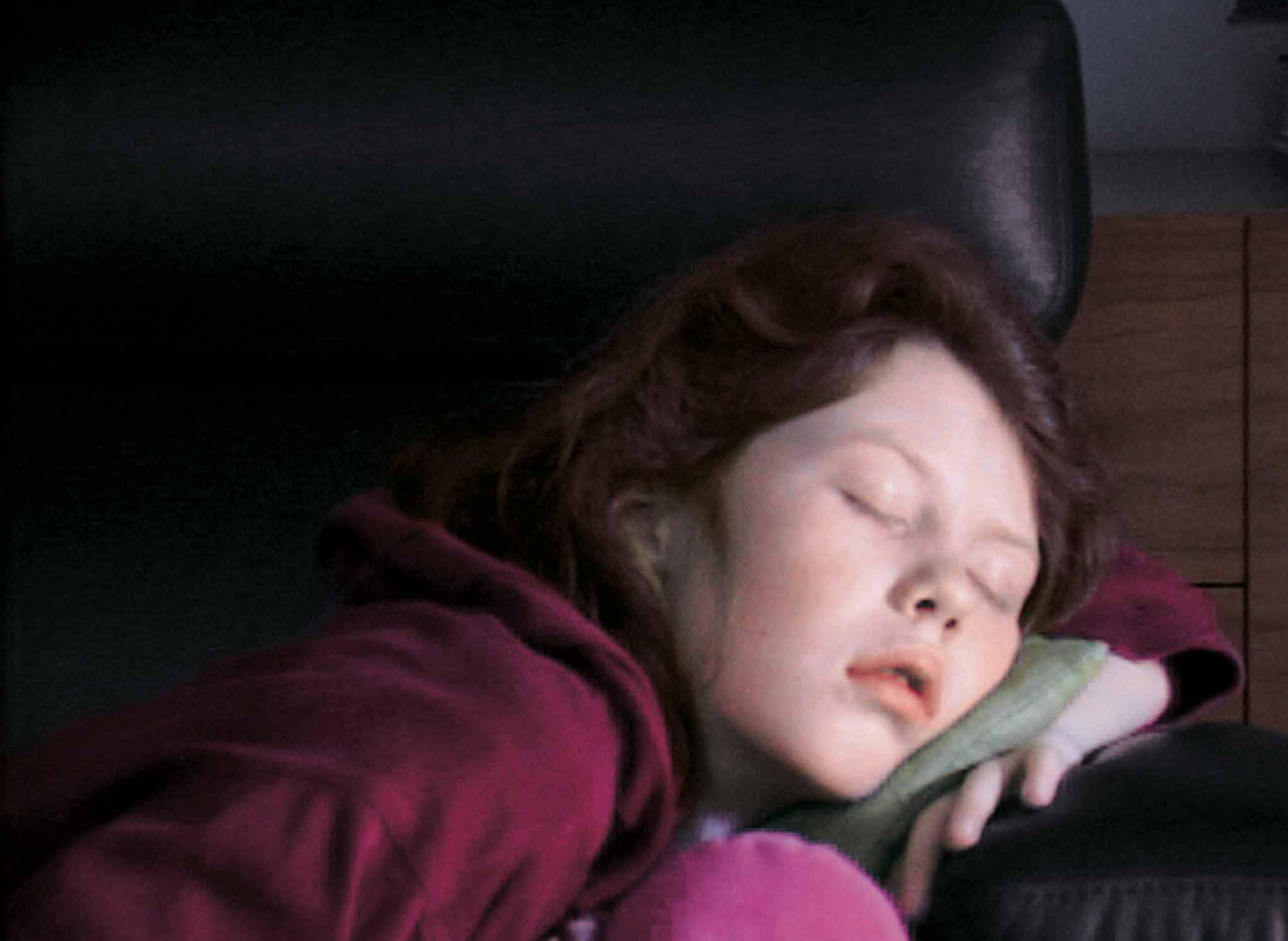
Foundation
Six artists present works that in some way critically re-stage films, media spectacles, popular culture and, in one case, private moments of daily life
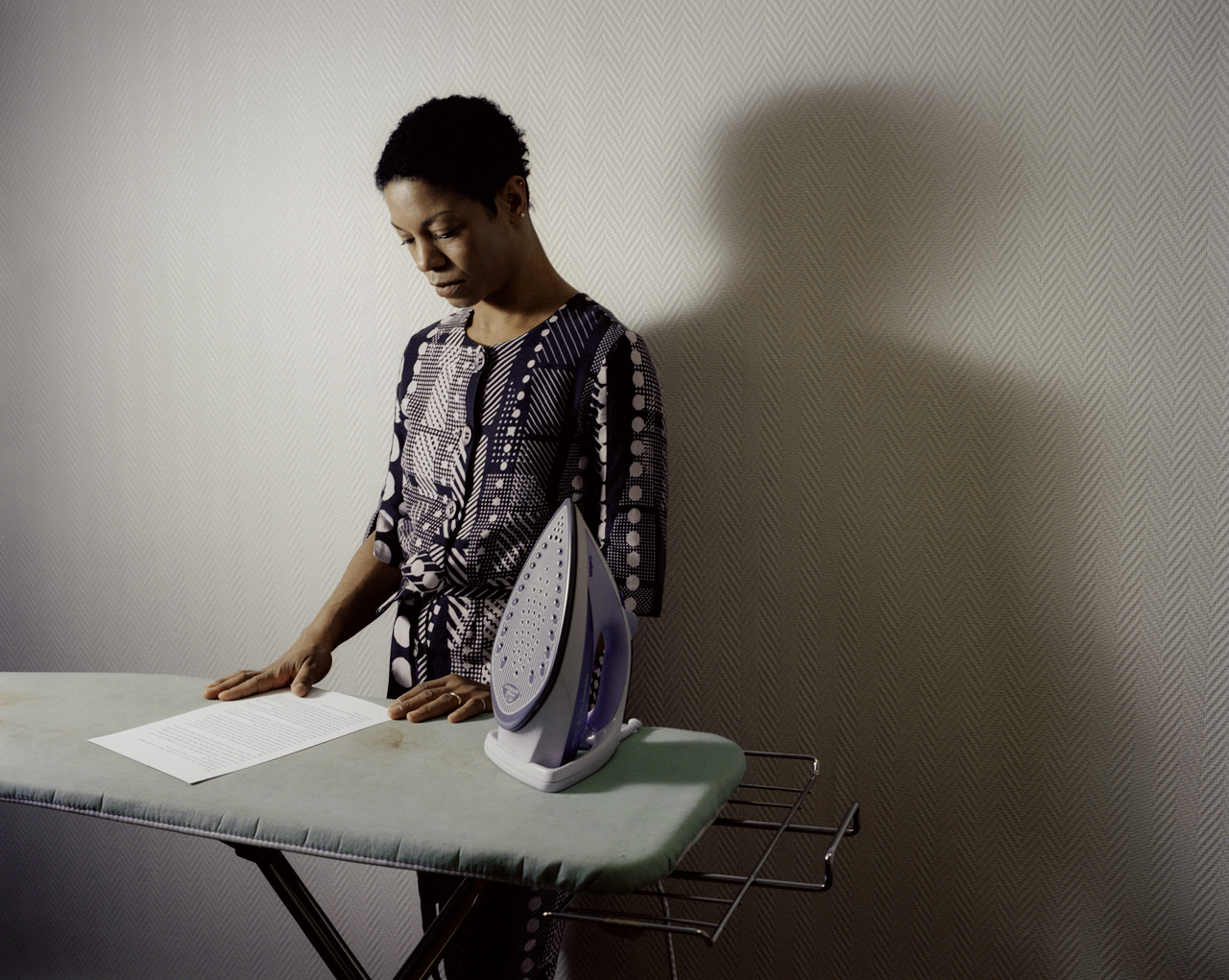
Foundation
This poetic and often touching project speaks to us all about our relation to the loved one
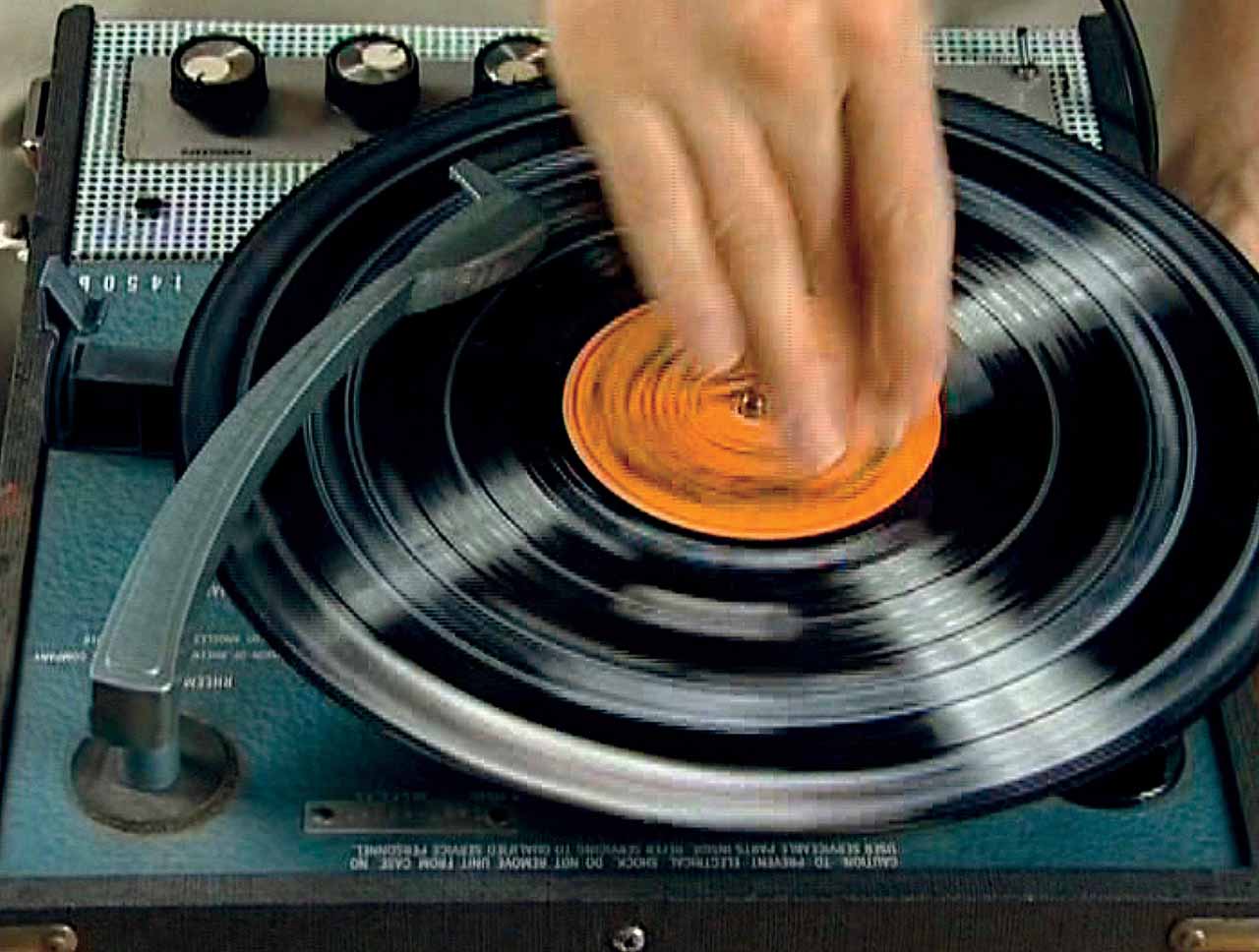
Foundation
DHC/ART Foundation for Contemporary Art is pleased to present the North American premiere of Christian Marclay’s Replay, a major exhibition gathering works in video by the internationally acclaimed artist
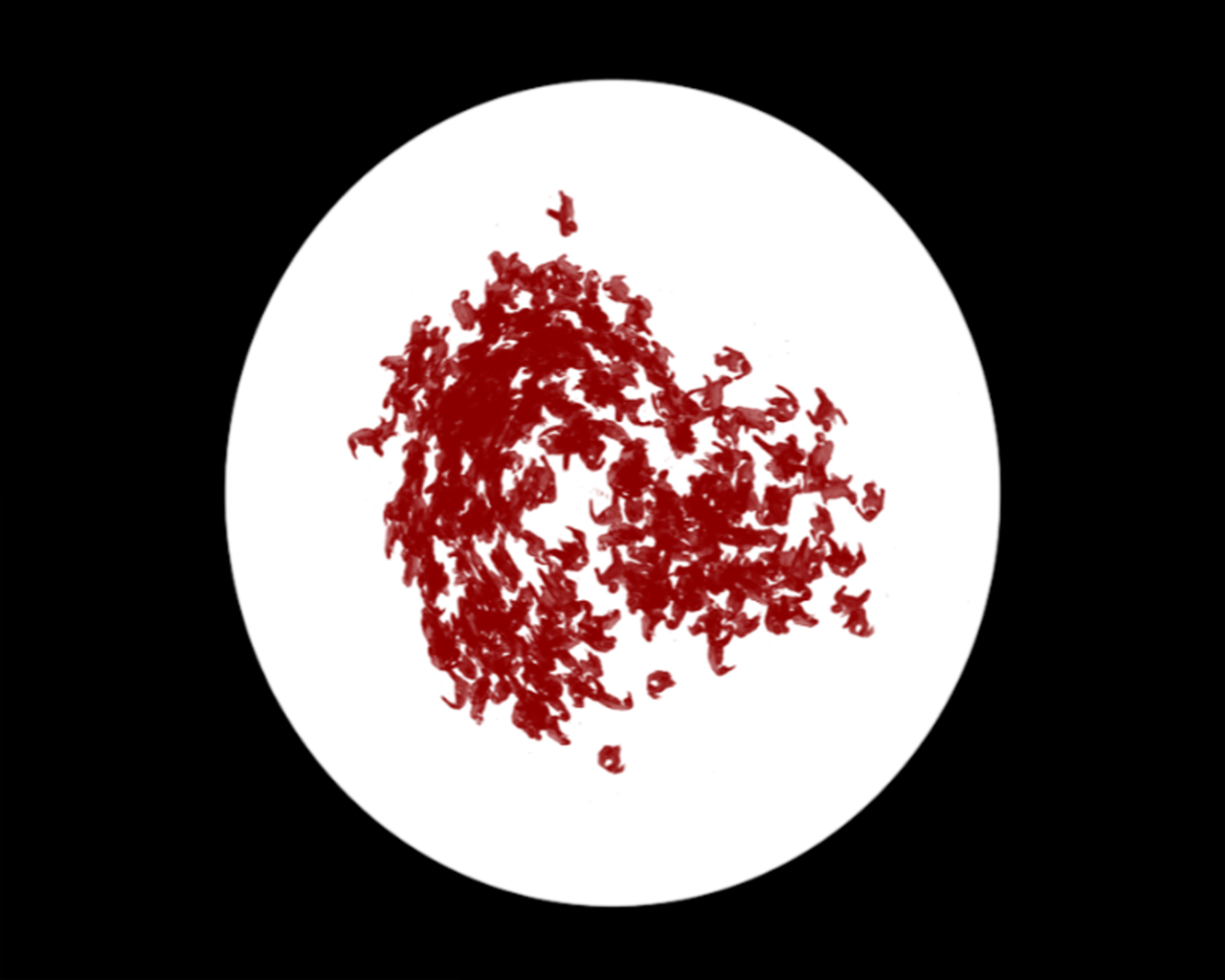
Foundation
DHC/ART is pleased to present Particles of Reality, the first solo exhibition in Canada of the celebrated Israeli artist Michal Rovner, who divides her time between New York City and a farm in Israel
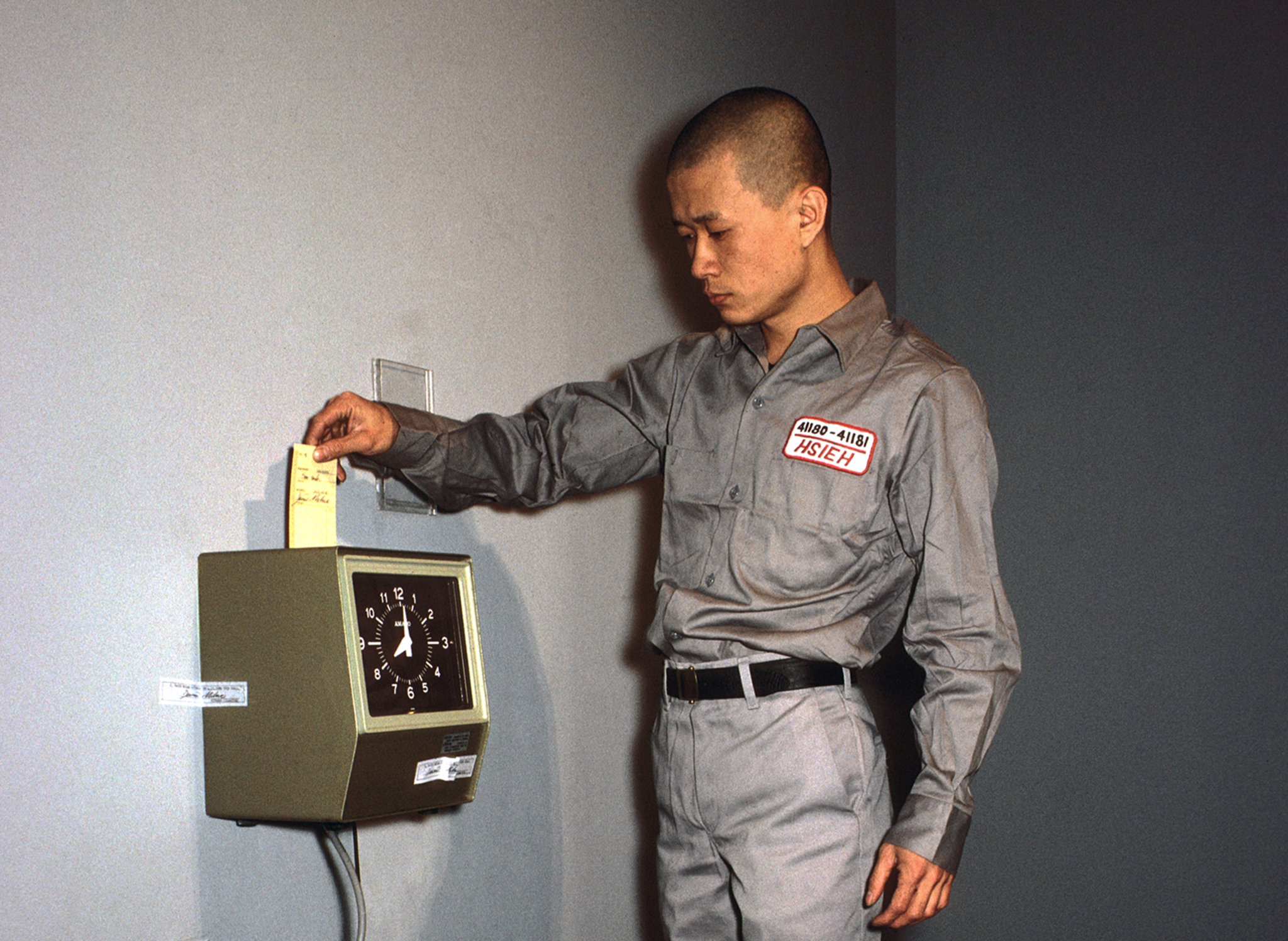
Foundation
The inaugural DHC Session exhibition, Living Time, brings together selected documentation of renowned Taiwanese-American performance artist Tehching Hsieh’s One Year Performances and the films of young Dutch artist, Guido van der Werve
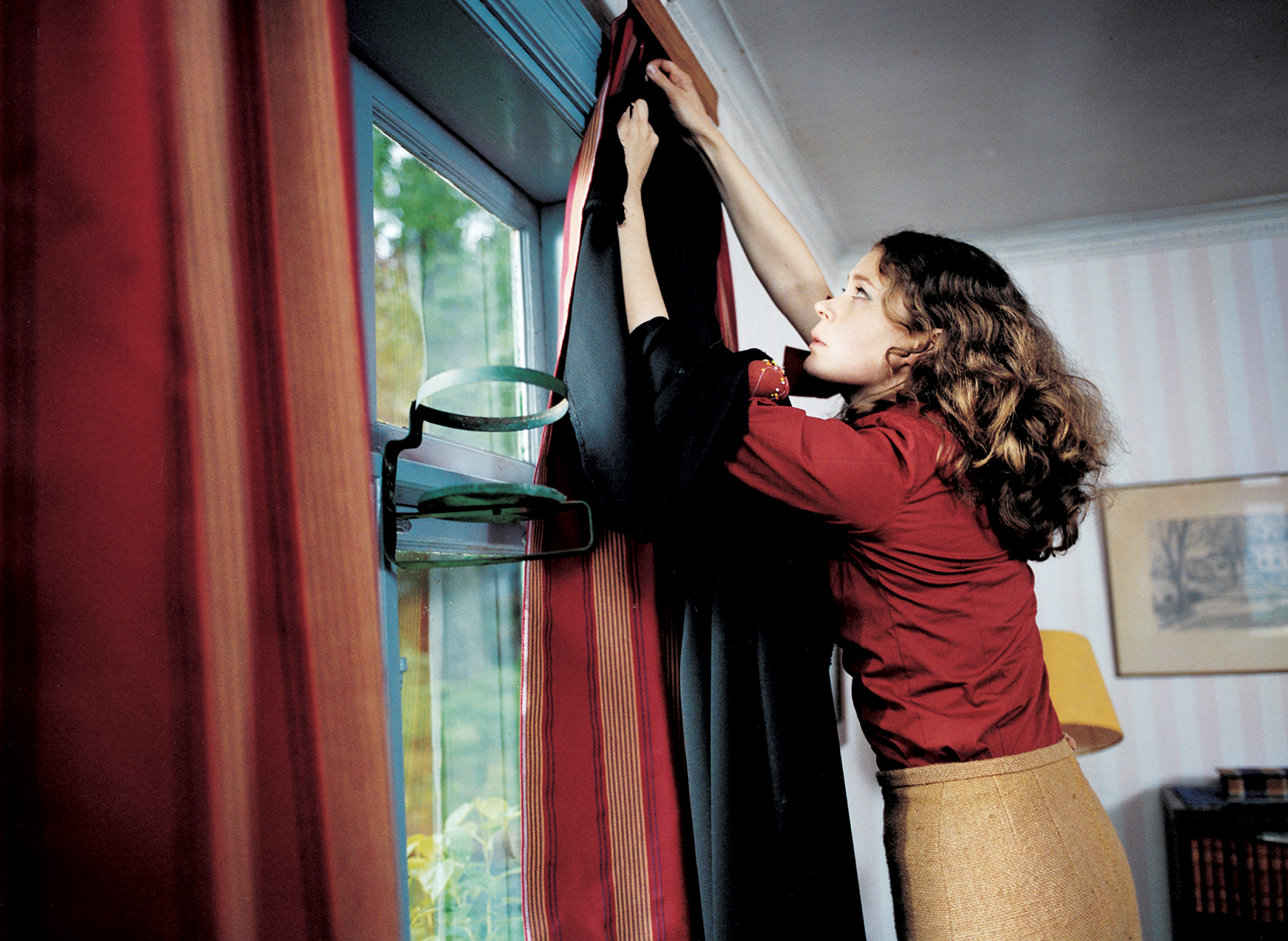
Foundation
Eija-Liisa Ahtila’s film installations experiment with narrative storytelling, creating extraordinary tales out of ordinary human experiences
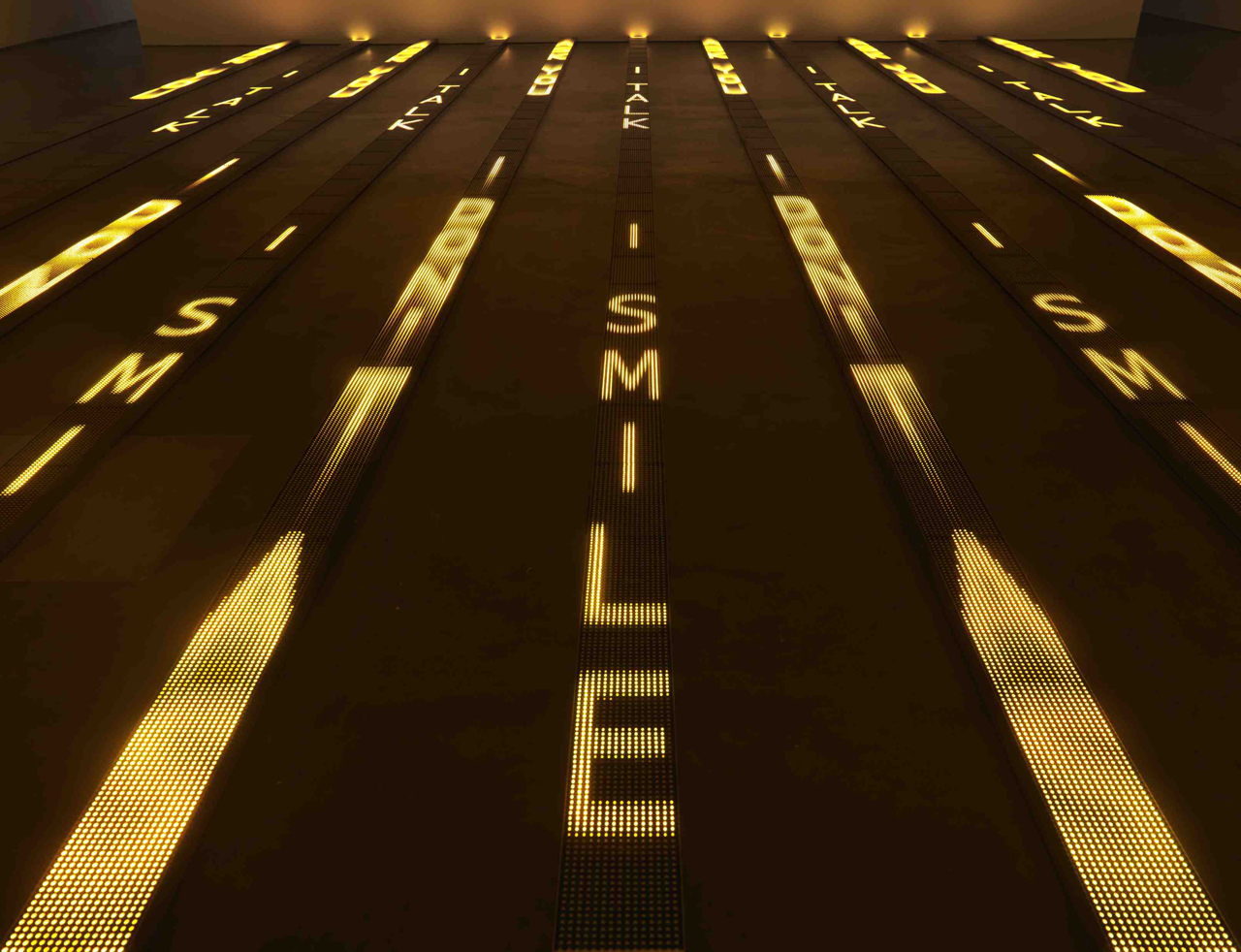
Foundation
For more than thirty years, Jenny Holzer’s work has paired text and installation to examine personal and social realities